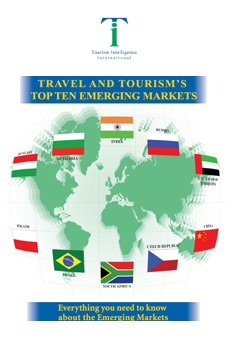Emerging vs. Traditional Markets – How do they Differ?
The
global travel and tourism industry is changing rapidly and radically. The key drivers of change are the new
demanding customers, on the demand side, and information technologies (IT), on
the supply side. Information
Technologies – from the mobile phones to the Internet and Facebook – have taken
the travel and tourism industry by storm.
These technologies are happily facilitating production economies of
flexible, segmented and individual holidays. But it is really the customers
that are driving the changing face of the travel and tourism industry, through
key demographic, psychographic and geographic influences. Many traditional travel markets are
experiencing maturity. Plus, their
populations are aging. This means that it would become increasingly difficult
to compete in these markets. The key
emerging markets, also known as the BRIC economies (Brazil, Russia, India and
China) – are now witnessing strong growth and new wealth, is the new hope for
future travel growth. Emerging markets
will drive the growth of international arrivals from 1,035 million in 2013 to a
forecasted 1.8 billion by 2030.
Emerging markets are completely different from the traditional markets. The top three traditional travel markets are the US, Germany and the UK. These markets have been the backbone of travel and tourism for decades and account for 20% of global travel demand. Emerging or BRIC economies (Brazil, Russia, India and China) are the new kids on the block and are shaking up the travel and tourism sector. Already, these markets account for 12% of total international arrivals.
Emerging markets are completely different from the traditional markets. The top three traditional travel markets are the US, Germany and the UK. These markets have been the backbone of travel and tourism for decades and account for 20% of global travel demand. Emerging or BRIC economies (Brazil, Russia, India and China) are the new kids on the block and are shaking up the travel and tourism sector. Already, these markets account for 12% of total international arrivals.
But how do these new markets compare with the mainstream ones? Firstly, the traditional travel markets are experiencing slow growth in outbound travel. Markets such as Germany and the UK have been experiencing growth rates between -1 and +3 per cent on average over the past ten years (2004 – 2013). However, emerging markets have been experiencing double-digit growth. China and India for example have been growing on average between 10-12%.
Figure 1
Traditional and Emerging Markets Compared
 |
| Source: Tourism Intelligence International, 2014 |
Second, traditional markets are experienced and mature travel markets. The 'new' travellers are young and curious about travel. But the comparison goes even beyond travel experience. Emerging markets are comparatively younger than the traditional travel markets. The respective populations of India and Brazil for example, each has an average age of 25.1 and 29 years. For China it’s 34.5 years. The population of the traditional markets of Germany and the UK each has an average age of 44 and 39 years respectively. There is a 19 year age gap between Germany and India.
Travellers from the traditional markets have been accustomed to wealth. Many of the more mature travellers have inherited their wealth and travelled because they simply could. The new travellers have earned their wealth and it is relatively novel to them. They see travel as social currency – the more they travel the wealthier they feel.
Traditional Western markets have travelled in search of warm weather. They lusted after the sun, sand and sea. Emerging markets have a different take on travel. They are looking for other “S”s. They want shopping, sightseeing and opportunities to gain status / social recognition and of course like all travellers, they are looking for sex. This is especially the case in China with its one child policy where female foetuses were destroyed in favour of the male sex. Now that the males have grown up, there is a real shortage of females.
If you liked this post, then perhaps these would be of interest to you as well:

